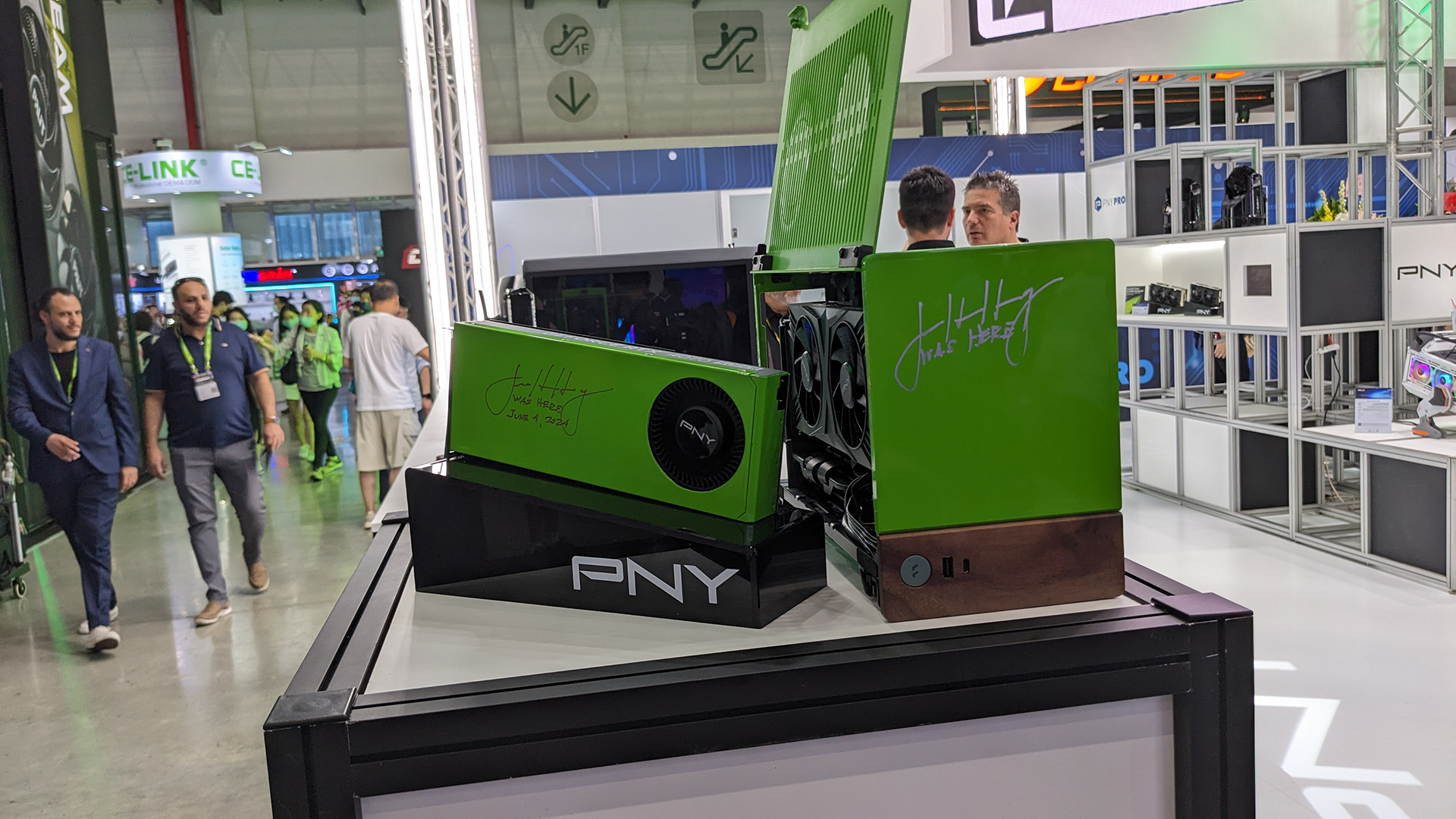For the past several years, we thought that Nvidia didn’t like any blower-style graphics cards in its GeForce gaming graphics card lineup. As a result, we were stunned to see an all-new PNY RTX 4070 Super blower-style graphics card on display at Computex 2024 with Jensen Huang’s (of all people) hand-written signature on the card. It turns out that Nvidia does not completely dislike blower-style cards — rather, it depends on the card’s TDP.
We discovered that Nvidia does allow AIB partners to build blower-style cards, but only on one condition — for a GPU to qualify, the card needs to have a TBP of 300W or less. If a specific model exceeds the 300W TDP envelope, Nvidia will not allow that model to go on the market unless the manufacturer ditches the blower-style cooler and goes with a more traditional cooling solution.
This explains the two-sided nature we are seeing from Nvidia right now surrounding the multitude of RTX 30 and RTX 40 series blower-style products that have been on sale in the past. After Nvidia cracked down on RTX 3090 blower-style production a few years ago, we started to see new blower-style coolers crop up on the market with mid-range Nvidia GPUs. Before, we didn’t understand why Nvidia was allowing these GPUs to stay on the market, but now we know why.
Nvidia is picky about blower-style coolers infiltrating its consumer graphics cards because of cross-contamination issues with its high-end and vastly higher revenue-generating Quadro and RTX A-series professional graphics cards. Before Nvidia piped down on blower-style coolers at the high end, AIB partners, consumers, and system builders realized they could retrofit Nvidia’s flagship gaming graphics cards into GPUs capable of doing professional work, with the only change being a switch from regular dual/triple fan cooler designs to single fan blowers.
Blower-style coolers are the quintessential cooler design in the workstation and server market. Their compact nature and ability to eject all hot air directly out the rear PCIe slots make them the most optimal cooling solution for size-constrained server racks and workstation builds. This is even more important in multi-GPU setups where exhaust heat might interfere with another GPU’s air intake.
Since GeForce graphics cards use the same dies as Nvidia’s professional GPUs, performance is essentially the same between the two lineups. The only thing that kept GeForce cards from excelling as professional cards in the past was their limited VRAM capacity. This changed, however, during the RTX 30 series era, when the RTX 3090 came with 24GB of VRAM, over twice the amount of its predecessor. This change alleviated most VRAM-constrained issues for anyone desiring to use a flagship Nvidia gaming GPU for work.
Nvidia’s 300W cut-off seems to be a good business strategy. All of the company’s existing GPUs in the 300W or lower category have 8GB or 12GB of memory, with the only exception being the 16GB RTX 4060 Ti. The VRAM constraints will help keep these GPUs from competing with Nvidia’s entry-level prosumer cards. However, even 16GB is enough for some people’s workflows, so there will be some self-competition regardless.
That said, Nvidia’s 300W strategy can only go so far. Blower-style coolers aren’t the end-all-be-all of prosumer GPUs. If you have a big enough case, you can easily slot two RTX 4090s or any other large RTX 40 series GPU in a single chassis for AI work or other non-gaming tasks. This is why cards such as the RTX 4090 are overpriced since that GPU specifically (ironically) is one of the cheapest GPUs for the AI performance and compute power it provides.
We didn’t get any specs of the PNY card, but it appears to be a traditional dual-slot GPU with a single blower-style fan at the rear. The one we saw had a green painted shroud with the words “Jensen Huang was here June 4, 2024” handwritten on the card. Jensen himself signed the card with his own initials.






